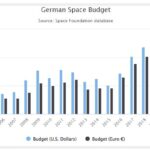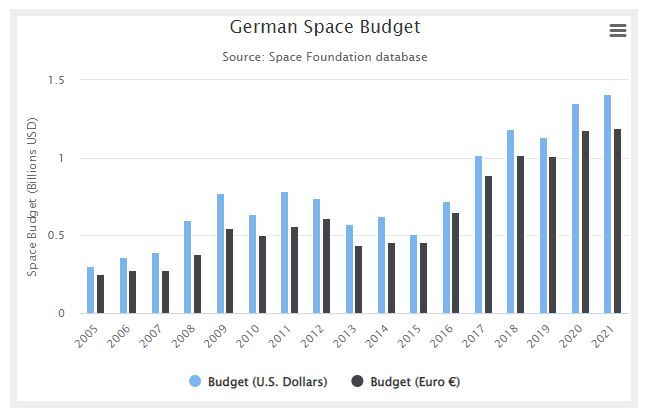Germany
Astronaut by top nations
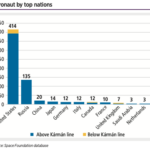
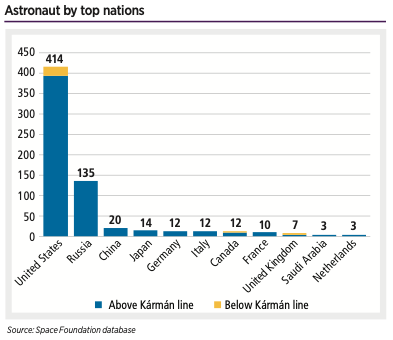
The majority of astronauts (95%) have also reached the Kármán line at 100 km — the internationally recognized boundary of space.
SNAPSHOT: Global space economy
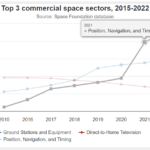
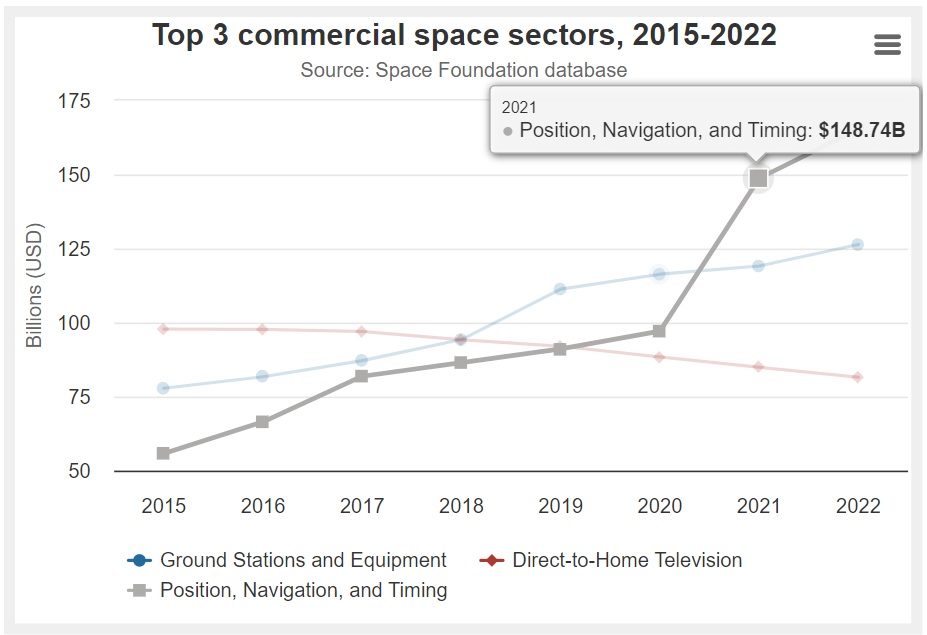
The global space economy totaled $546 billion in 2022, 8% higher than 2021 — and it could reach $772 billion by 2027, according to Space Foundation analysis.
SNAPSHOT: Human spaceflight
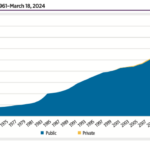
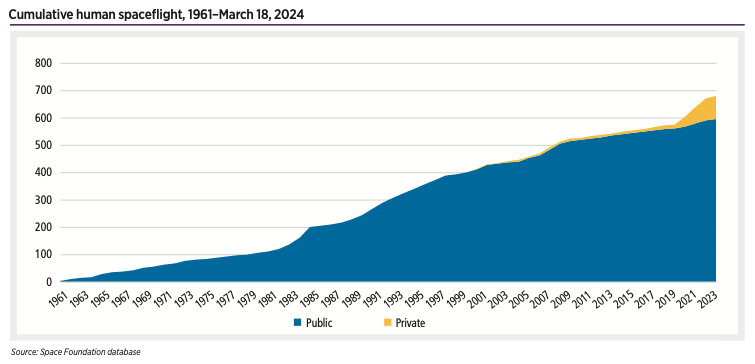
As of mid-March, 685 astronauts have reached at least 80 kilometers above the Earth’s surface. This total includes 86 private astronauts, 22 times as many as there were two decades ago.
Astronaut and Mission Count for Top Nations
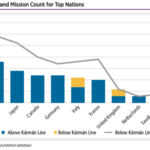
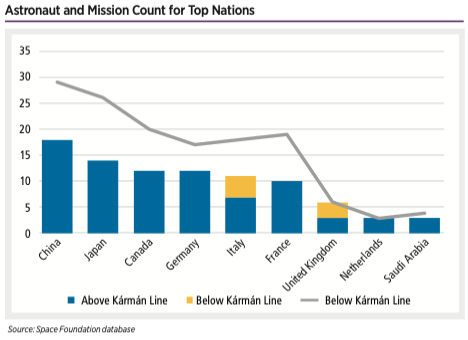
Public astronauts typically complete multiple missions in space over their careers — 65% have two or more flights compared to only 9% of private space travelers. Retired NASA astronaut Frederick “CJ” Sturckow remains the only person to have visited space eight times.
SNAPSHOT: Human Spaceflight
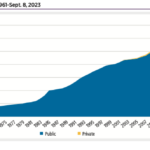
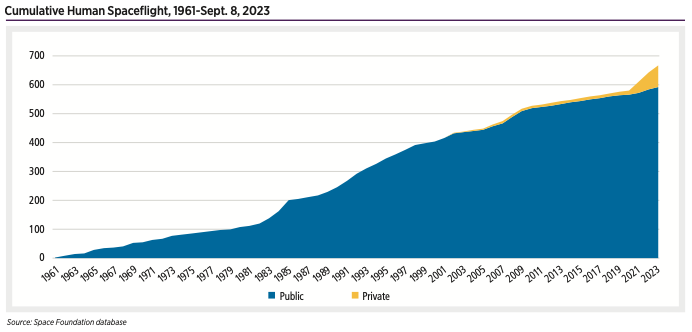
From the early days of the space race, sending humans to space has always been a key priority. The International Space Station (ISS) has maintained a continuous human presence in orbit for more than 20 years, and microgravity research on space stations has provided valuable insight for future long-term human missions in space.
Per Nation Mass Share of an Estimated 973,000 KG, 2022
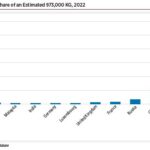
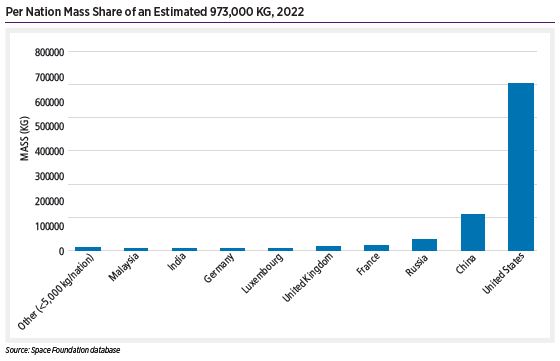
Operators deployed ~421 spacecraft with a mass of 200 kg or less, 18% of all deployed spacecraft in 2022. SpaceX’s Starlink satellites comprised over half the spacecraft mass deployed in 2022. The company’s Starlink deployments added up to 518,523 kg, nearly double the 257,140 kg it deployed in 2021. The largest spacecraft deployed during 2022 was Lockheed Martin’s Orion space capsule (25,848 kg), deployed during NASA’s first Artemis/Space Launch System launch.
Pressure Ramps Up for New Vehicle Launches Pushed from 2022 to 2023
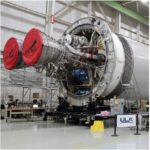
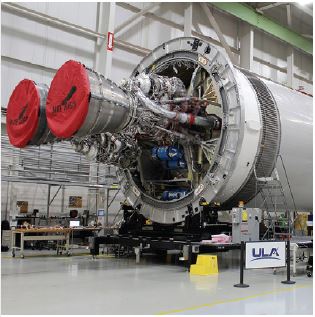
The list of launch vehicles set for maiden flights in 2023 may sound familiar. It’s mostly the same group of launch vehicles initially slated to fly in 2022.
German Space Budget, 2005-2021
European Space Industry Employment, 2011-2021
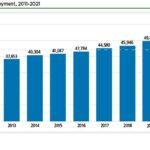
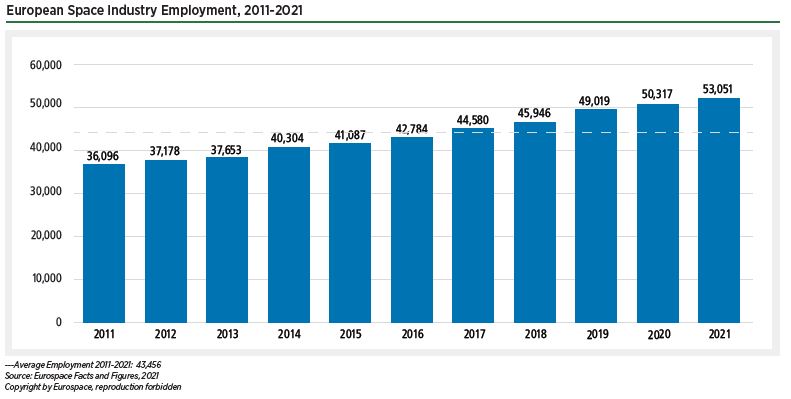
European space employment was 53,051 in 2021, an increase of 5.4% from the total of 50,317 from 2020. This estimate is based on analysis by Eurospace, the trade association of the European Space Industry. The analysis focuses on the space manufacturing industry; space services companies such as Ariane- space, SES, Eutelsat, and Inmarsat which also employ thousands of individuals, are not included.
Europe Continues to Lead in Global Workforce Job Growth

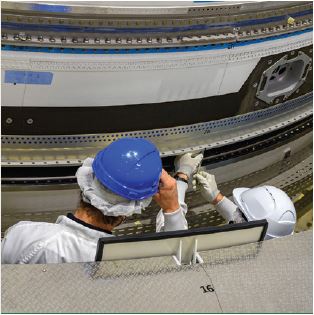
The space industry relies on skilled individuals from a wide variety of fields to enable the cutting-edge developments taking place in this sector. While many countries do not regularly produce metrics on the size of their workforce, these data are available for several major space actors, including the United States, Europe, Japan, and India.
